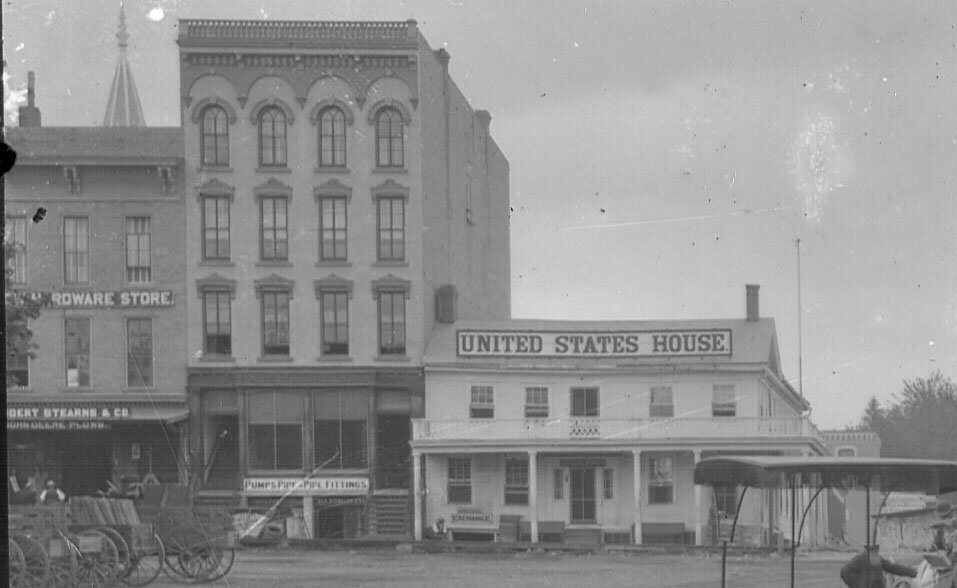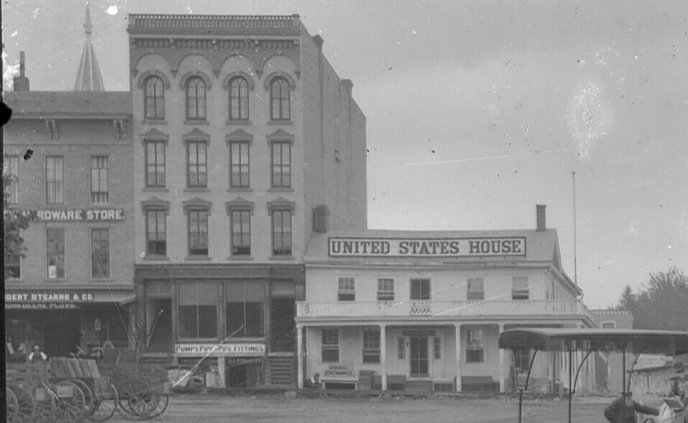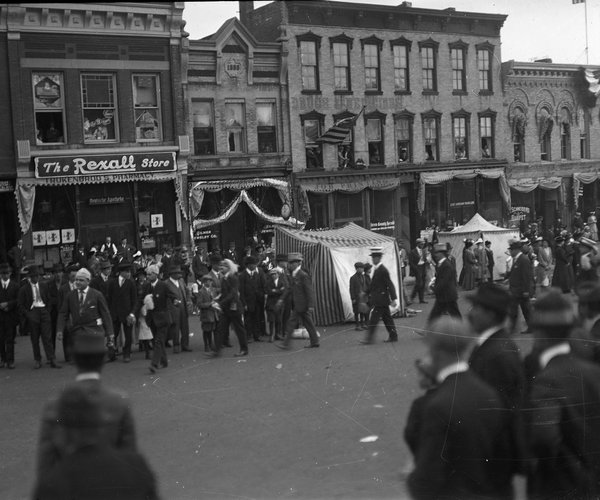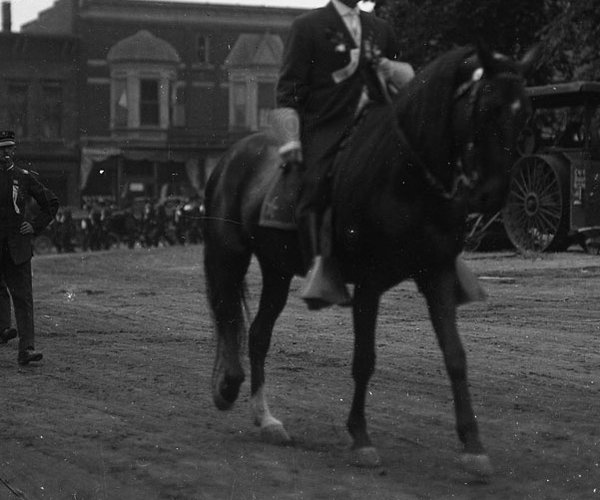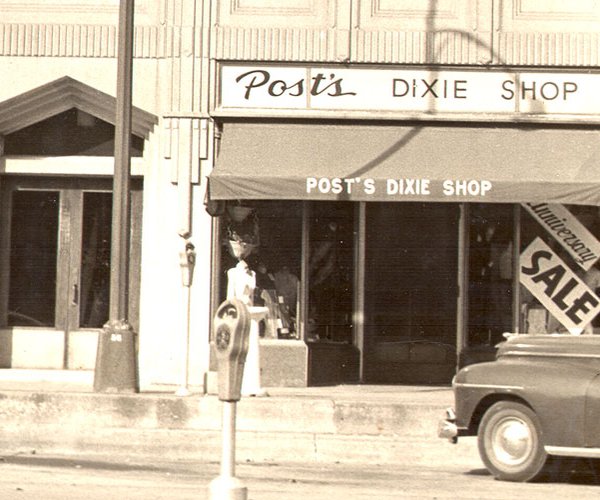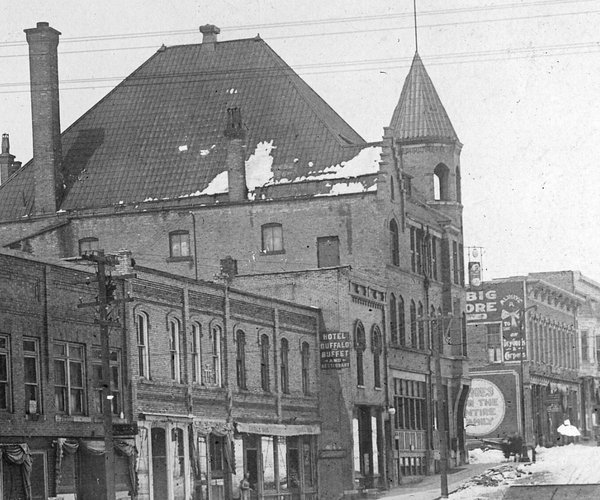I am quite sure that many of the readers have eaten a pancake breakfast on the north side of the Square at least once. I am guessing that a good portion of them know nothing about the organization that sponsors it nor the history of the building. The Smith Lodge, No. 31, of Ancient, Free and Accepted Masons was organized 175 years ago this year in Monroe and that building is being rededicated today, October 11, having been built 90 years ago this year. In this, and the next three columns, we will explore this organization and the buildings that they have called home.
The dispensation to organize that Lodge was granted on April 26, 1850. The Lodge was named after William R. Smith, Mineral Point, a very intelligent, influential citizen, who was considered to be the “father of Masonry in Wisconsin.” Their first meeting was held at the former Courthouse that stood in the center of the Square. In the early days, the schedules of Lodge gatherings was regulated by the full moon; adjournment sometimes was to sunset or early candlelight. They were granted a charter on December 13, 1850 from the Grand Lodge of Wisconsin, which makes it the oldest civic organization that exists in Monroe. J. M. Ball served as the first Worshipful Master and J. W. Stewart as secretary. The Lodge was consecrated on January 13, 1851 when the officers were installed. In August 1851 necessary paraphernalia was provided, including a dozen aprons and six “spit boxes.” Six candlesticks, a ballot box, a stove, and fuel were soon added. Twenty-eight degrees were conferred in 1851 and 20 more in 1852.
The first reference to meetings was found in the Monroe Sentinel on November 17, 1852. It said that their regular meetings were held at their Hall on the Thursday evening on or preceding each full moon.
The Smith Lodge held their annual meeting for election and installation of officers on St. John’s Day, Monday, December 27, 1858. “The exercises were followed in the evening by excellent addresses from Reverends Boardman and Drew. Hill & Huntley, of Hill’s Hotel, got up a supper in fine style. A hop was held in the bank hall for those who desired it. Officers for the following year were W. W. Wright, C. M. Perry, A. W. Goddard, S. G. Lombard, W. Mosher, E. Bartlett, M. Reitler, and B. B. Brownfield. G. W. Tenney and B. Dunwiddie were the stewards.”
In the early years, they shared their Hall with the International Order of Oddfellows on a 50-50 basis of time and expenses. Two or three moves were made during the early years. Not much was found about them in the early newspapers.
Between 70 and 80 couples participated in a festival that was held at Union Hall on Tuesday evening, January 22, 1867. Severance’s quadrille band came from Milwaukee to provide the music. At 10:00 the procession marched to McKey’s Hall [now the site of the Eugene Hotel] where a “sumptuous, and really magnificent supper,” prepared by J. A. Gleissner of the American House, was served. He “spared no pains nor expense in procuring every delicacy the most fastidious could wish. Gleissner’s name is alone a sufficient guarnty [sic] that nothing was undone in the line of his duties.”
After supper came the regular toasts “of a Masonic character,” prepared for the occasion and presented by C. M. Perry with appropriate responses. The party “then repaired to the union hall, where they enjoyed the delightful music, which would make a penny dance, and enjoyed body, soul, and spirit in the festivities of the occasion” until the wee hours of the night.
It was announced in August 1867 that the masonic fraternity was having “a fine new hall fitted up for their use in the fourth story of the bank building” on the north side of the Square. “When finished, few large rooms in the state will excel it in size, convenience, and beauty.”
The Masonic ball held in February 1870 was a grand affair. The ladies of the Universalist Church received great credit for the “bountiful and excellent” supper. “The committee of arrangements deserve great credit for their efficiency and enterprise.”
It was shared on August 8, 1877 that the Masonic Hall had taken over the top two stories of the bank building that were being made into one. The work was nearly completed, with only painting and decorations remaining unfinished. “It will be one of the pleasantest and most elegant halls in the state.” A pamphlet, “The First One Hundred Years,” stated that they rented the top floor for $150 a year. “Our brethren climbed the steep, dark stairways to this Lodge Room, lighted by kerosene lamps, for many years.”
There were newspaper articles during the next few years that mentioned the names of the officers as well as some small events that were held, but not much more until 1900. The Palestine Chapter of the Masons were mentioned in 1887, but that Order no longer exists.
Before the White Block was even built on the southwest corner of the Square in 1901, it was announced on January 24, 1900 that the Masons planned to lease the entire third story.
About 50 members of the Order attended the 50th anniversary celebration on Thursday evening, April 26, 1900. A new member was to be initiated that evening, but he failed to show up. So the “exemplification of the work of the Order had to be dispensed with.” In lieu of that event, “a little more time was spent around the refreshment tables and in social intercourse.” Mayor A. S. Douglas, who was chosen to be the master of ceremonies, made one of his characteristic talks that “started the ball rolling.” A number of other members spoke of the early days of the Lodge; “it was a pleasant occasion, enjoyed by all present.”
More will be shared next week about the Smith Lodge, including whether they were able to move into the White Block after it was built.
— Matt Figi is a Monroe resident and a local historian. His column will appear periodically on Saturdays in the Times. He can be reached at mfigi48@tds.net or at 608-325-6503.
